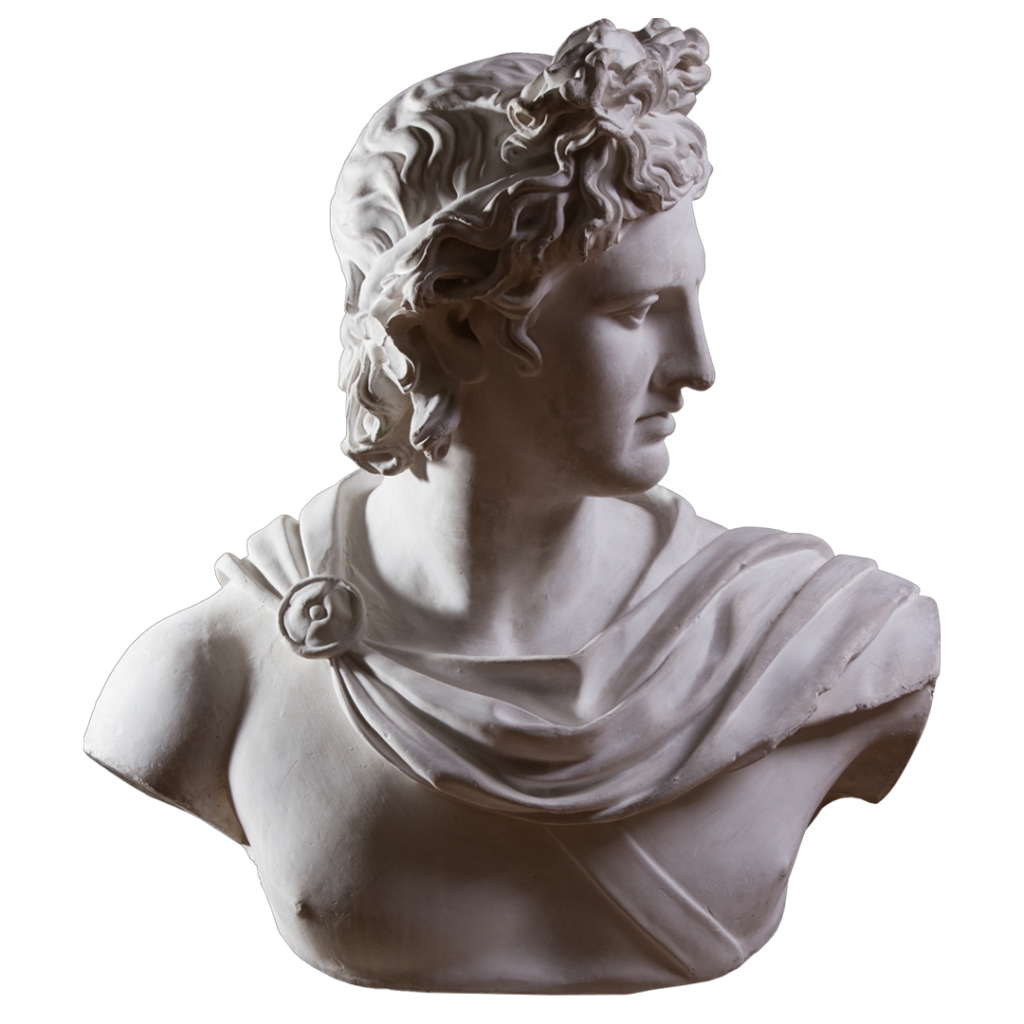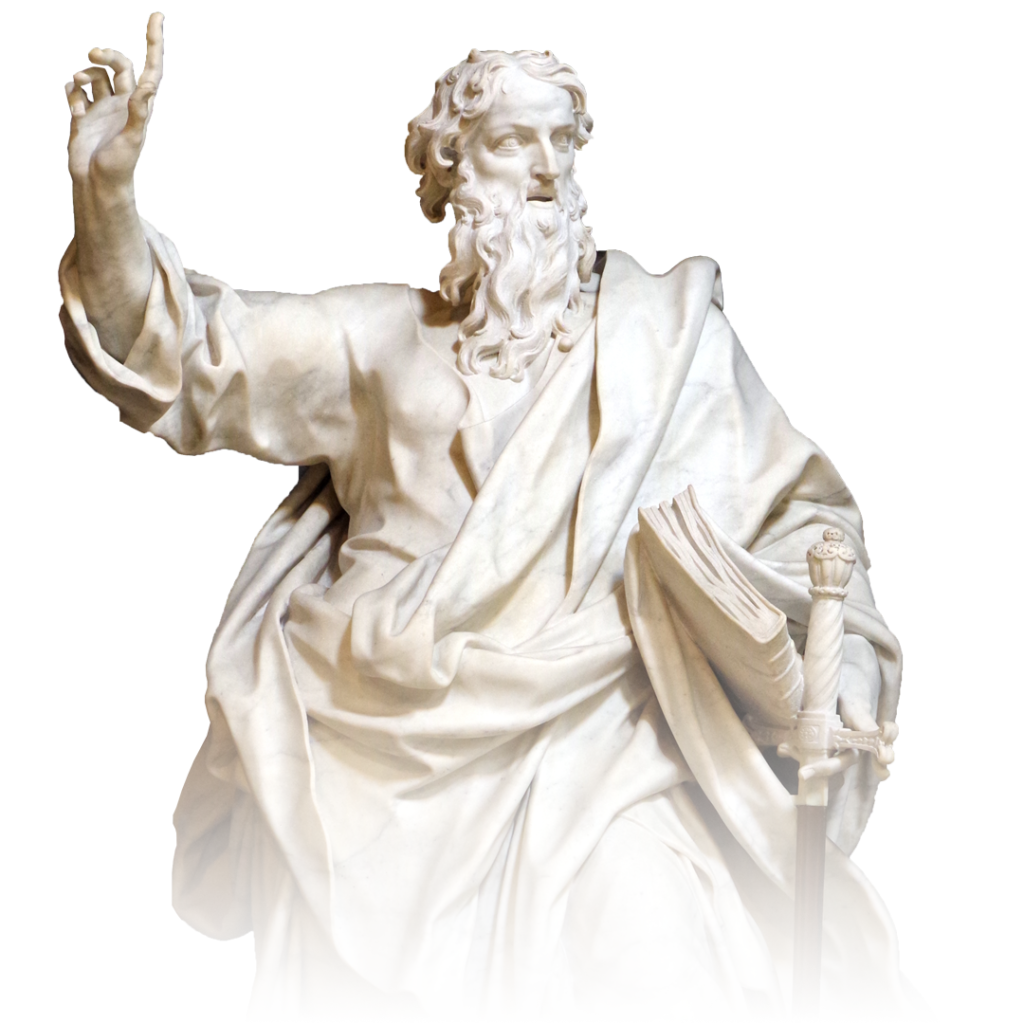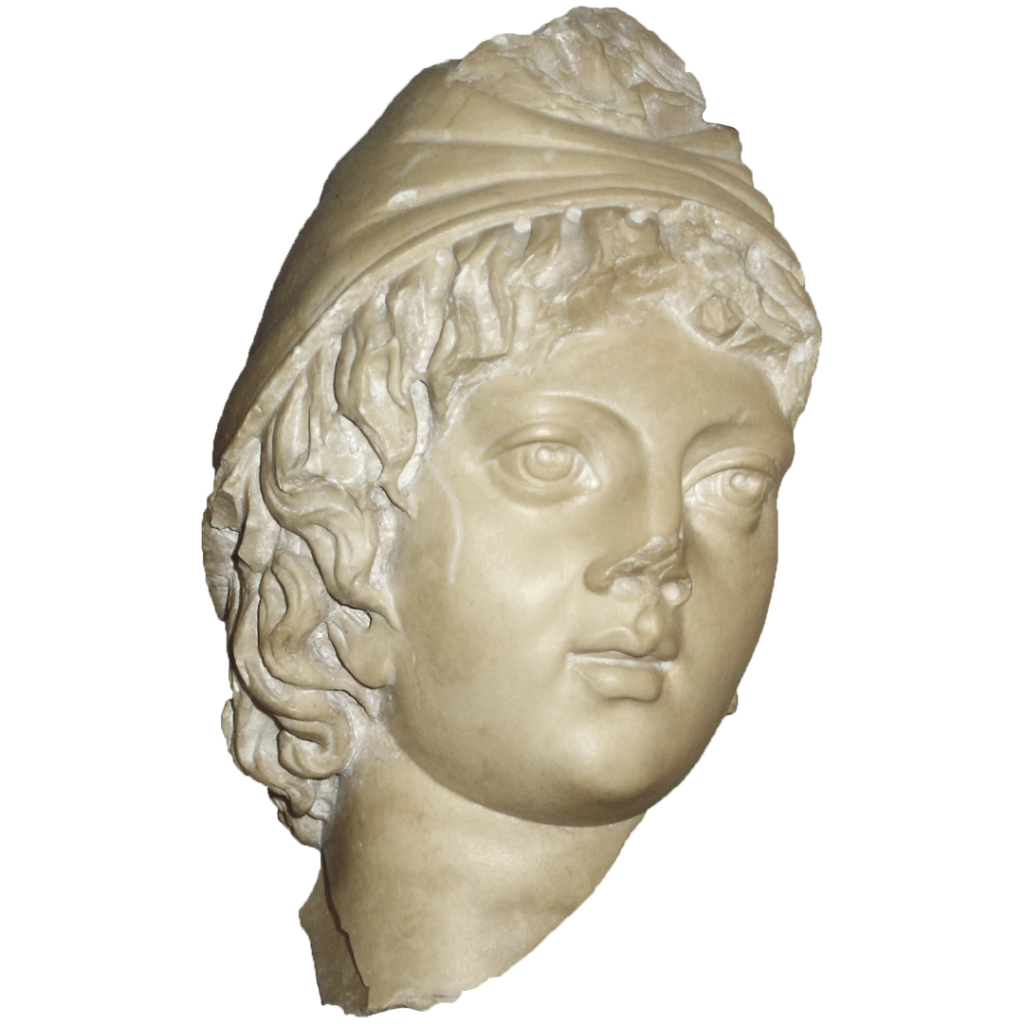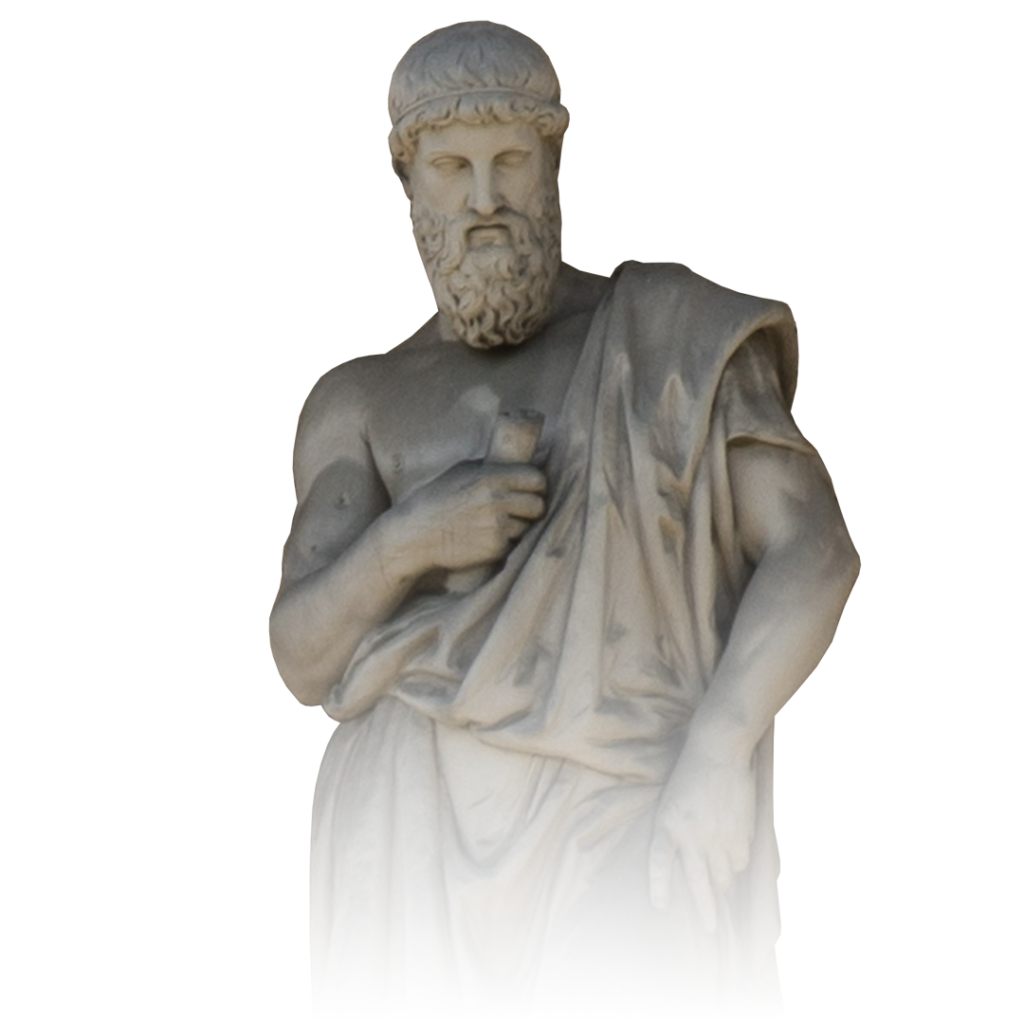Prologue
Is the person of Jesus Christ, derived from Judaism, or paganism? Is He the Messiah, or a Greek hero?
- Hellenistic Judaism
- Jesus is copied from ancient gods of pagan cultures
- religious syncretism
- Paul’s usage of the mystery language
- Justin Martyr’s claim
- Jews don’t like pagans (no syncretism)
- Paul’s resistance to paganism
- other resurrections are only metaphors
- mystery cults are from 2nd century
- connections are superficial
- false gods were ‘invented’ to serve the needs of local tribes
- Paul’s theology comes from Judaism
Hellenistic Judaism
Richard Carrier claims that Christianity is a fabricated Greek version of Judaism.
Alexander the Great (356-323 BC) created the Hellenistic Age, a time where Greek culture was predominant in the Mediterranean region until 31 BC (Palestine included). Many gods were syncretized and shared between the nations (ex: Serapis, Hermanubis). It is possible that the first Christians assimilated some features of Greek religion and implement them upon Judaism and create a ‘divine Savior’ with Jesus Christ? Or fabricated an additional mythical hero from epic poems?
Many scholars tend to over-exaggerate the connections between Christianity and paganism.

- Greek language
- Proximity of Gentile cities to Galilee
- Hellenistic cities within Galilee
- Pagan Gentile population within Galilee
- Location & topography of Lower Galilee
- Foreign rule in Galilee
- Tension between Galilee and Judea
- Magic & astrology
Could paganism influenced Judaism?
The covenant relationship between God and Israel is like a husband and wife1. The Jews are forbidden to worship any other gods2, idolatry was like cheating on a spouse. They recite 2 times a day the Shema prayer3. It’s monotheism at its core. The Greco-Romans, however, were polytheists, and often syncretizing with other religions (ex: adding Zeus, Isis or Mithras to their list of deities to worship). The Jews, on their side, has a long history of smashing down pagan idols (Moses, Elijah, Joshua, etc.).
Between the Maccabees revolt (168 BC) and the fall of Jerusalem (70 AD), we find no trace of Jewish Palestine assimilating pagan beliefs and practices7.
In the Greco-Roman world, only the Jews refused to honor gods, shrines, and cults other than their own8.
Herod refused to build pagan temples or gymnasiums in Jewish areas, and to build an amphitheater in Jerusalem9.
Indigenous cultures are largely intact and unaffected by Greek religious assimilation10.
In other word, Hellenism may affect their conquered land’s culture, but not their religion.
A first attempt
Justin Martyr (100 – 165 AD) is the 1st Christian to make the parallels with the pagan idols11. He attempted to stop the Roman persecutions against the Christians (chapter 1), so he had to tell that the Roman religion had similarities with Christianity to bring peace between the two cultures. But he knew the substantial difference between both. Celsus (Greek philosopher) also attempted to do the same.
The Semitic version of God is incompatible with any pagan deity. He is in another category of His own.
Jesus: a mythical hero?
Could Jesus be similar to those famous Greek heroes? Like Perseus, Achilles, Jason, Odysseus, Prometheus, etc.
If that’s the case, then scholars would have to include historical characters like Abraham Lincoln, Winston Churchill, Napoleon, President Kennedy and William Wallace in the same category12. Moreover, Jesus is never depicted as a military warrior, a common theme on those mythical pattern. On the contrary, He was a teacher, servant and miracle-worker.
Jewish origins
Jesus’ Messianic features are completely derived from Judaism. He fulfilled the 300 predictions foretold in the Old Testament. He is also the embodiment of Yahweh. People never realized it until He started to explain to them.
Jesus used the term ‘Son of Man’13 (81 times) instead of ‘Son of God’, to describe Himself as divine.
Paul
Among the Jews, Paul was a zealous Pharisees14, the most strict Jewish sects who keeps the Laws faithfully. They are the most intolerant against the idea of religious syncretism.

Creative Commons Attribution-Share Alike 4.0 International
Image by “Baba-patrimoine.fr” (Wikipedia). Image was cut for purpose of aestheticism.
- he hates the pagan gods, responsible for people’s sin15
- he allowed people to stone infidel Jews16
- he debates with Hellenists17
- he stayed a monotheist after his conversion18
- he wanted to destroy (violently) the Church19
- his zeal is comparable to Phinehas
(Num 25:1-15)20 - he persecuted the Christians thinking they were blasphemers against God by worshiping a man called Jesus21
In his eyes, Jesus is Yahweh embodied.
Unless Jesus is genuinely God & the Messiah in Paul’s belief, nothing will ever convince him to change his mind.
The Gospel authors
Peter told Cornelius that it was sinful for a Jew to associate or visit a Gentile24.
Who were the first Christian authors who wrote the New Testament? Faithful Jews: Paul, Matthew, Mark, Luke, John, Peter, James and Jude. They constantly refers back to the Old Testament: Jesus is the new Adam25, the new Moses, the new David, etc. and God (Yahweh) himself.
Contemporaries of Jesus, the first disciples, were pious Jews in a constant debate against each other over the Jewish Laws (circumcision26, temple purification, the meal-offering, etc.). We can’t imagine the Apostles to invent a Jewish Messiah based on pagan myth as the foundation of their own belief.
The Jesus parallels
the Mystery cults

Mystery cults are secretive. People don’t usually talk about it (there aren’t a lot of evidence available).
Christianity on the other hand, is the total opposite. Jesus commands the disciple to preach the Good News to everybody, so they can get saved. The Apostles were highly concerned with rigid doctrines.
Jesus’ miracles & resurrection are unique compare to other religions27.
The parallels are committing the “post hoc ergo propter hoc“ fallacy.
Morgan Robertson‘s novel “Futility” (1898), talking about a gigantic ship, the “Titan”. It was considered unsinkable, but it hits an iceberg and sink. There were very few lifeboats, so the majority of the people perished. 15 years later, the exact same story really happened to the Titanic. Was it a coincidence? Or a conspiration?
And even worst.
As Martin Hengel argues, all of our evidence for the mystery cults comes from the 2nd to 3th century, thus, would not influenced Christianity28.
“Anyone who thinks that Jesus was modeled on such deities needs to cite some evidence—any evidence at all—that Jews in Palestine at the alleged time of Jesus’s life were influenced by anyone who held such views.” 29
Bart D. Ehrman
But even if any of them pre-date Christianity, all the primitive Christian theology (baptism30, Eucharist31, virgin birth32, resurrection33, etc.) are still derived from Judaism. Paul quotes to the Old Testament around 268 times, from his 13 letters. The Gospels & Church Fathers quote from the Old Testament (typology). Baptism didn’t come from Mithras, the Eucharist didn’t come from Dionysus.
the dying-rising gods
pagan gods
If pagan religions had such stories of divine ‘resurrections’, they were only metaphors (speaking about seasonal & day cycle, weather, harvest, reproduction and fertility)3435. The gods were associated with forces of nature (ex: the sun was a deity, the sky as well, the moon as well, etc.). The locals invented traditional myths to try explaining the world around them.

Nut (Egyptian goddess of the sky) give birth to Ra (Egyptian god of the sun) every morning and swallow him back at night (and so forth) to explain the day/night cycle.
Attis (Phrygian god) is a vegetation deity who ‘die’ in winter and ‘rise’ back in spring.
In Hinduism, re-incarnation is to be ‘reborn’ in another mortal body that wasn’t ours, die again, and reborn again, etc. (continuous cycle).
Isis & Osiris (Egypt) pre-date Christianity, but there’s no resurrection. Osiris stayed in the underworld36.
Pagans celebrated festivities as the ‘return of their gods’, following a specific date of the calendar. Easter on the other hand, follows the date of the Passover feast, which change dates every year according to the moon. In each liturgy, Jesus isn’t re-sacrificed or reborn again. It’s done one time in history.
The biggest mistake would be to associate Jesus with those ‘vegetation gods’. He is Yahweh, the Creator of the universe, in the flesh37. Heaven & earth are submitted to Him. The sun, the moon, the sky, they are creations, not the Creator.
“The category of dying and rising gods, once a major topic of scholarly investigation, must now be understood to be have been largely a misnomer based on imaginative reconstructions and exceeding late or highly ambiguous texts.”38
Jonathan Z. Smith
None of them is even closed to Christianity. Jesus’ resurrection is a one-time event, to be ‘reborn’ in the same body, but in the state of glory (immortality) for eternity.
Greek philosophy
“Once a man has died, and the dust has soaked up his blood, there is no resurrection.”43
Aeschylus

In Plato‘s mind, the human body as a ‘prison’, in which the soul must be liberated from this corrupted material world. They don’t want to come back in their body.
In both scenarios, the raising of an immortal body isn’t an option. Christianity have nothing to borrow from them.
Paul
In the Judaeo-Christianity faith, matter is good: bodily risen Jesus, God took a body, and emphasis on the sacraments (baptism, Eucharist, etc) for salvation. It’s the opposite: there is no borrowing here.
Paul & John condemn the docetists as false teachers.
Horus
Horus is an Egyptian god.
Attis
Attis is a Phrygian god.
| Attis | Jesus | |
| Date of birth | December 25 | |
| Virgin birth | Yes | |
| Death | Crucifixion | |
| Followers / disciples | 12 | |
| Resurrection | Physical | |
| Performed miracles | Yes |
Krishna
Krishna is a Hindu god.
| Krishna | Jesus | |
| Date of birth | December 25 | |
| Virgin birth | Yes | |
| Death | Crucifixion | |
| Followers / disciples | 12 | |
| Resurrection | Physical | |
| Performed miracles | Yes |
Dionysus
Dionysus is a Greek god of wine, fertility, ritual ecstasy, etc.
| Dionysus | Jesus | |
| Date of birth | December 25 | |
| Virgin birth | Yes | |
| Death | Crucifixion | |
| Followers / disciples | 12 | |
| Resurrection | Physical | |
| Performed miracles | Yes |
Mithras
The Roman cult of Mithras begin no earlier than the 2nd century56.
Adonis
…
| Adonis | Jesus | |
| Date of birth | December 25 | |
| Virgin birth | Yes | |
| Death | Crucifixion | |
| Followers / disciples | 12 | |
| Resurrection | Physical | |
| Performed miracles | Yes |
Osiris
Osiris is an Egyptian god.
| Osiris | Jesus | |
| Date of birth | December 25 | |
| Virgin birth | Yes | |
| Death | Crucifixion | |
| Followers / disciples | 12 | |
| Resurrection | Physical | |
| Performed miracles | Yes |
Tammuz
…
| Adonis | Jesus | |
| Date of birth | December 25 | |
| Virgin birth | Yes | |
| Death | Crucifixion | |
| Followers / disciples | 12 | |
| Resurrection | Physical | |
| Performed miracles | Yes |
The ancient civilization believed in the deity of fertility and seasonal acts.
It was only local gods since other regions of the planet don’t have the 4 seasons. The Christian God is a very distinct one: it’s a universal God that reigns over time.
December 25
There’s no clear indication that Jesus was born in December 25 in the early Church. It took around 200+ years of debate to finally come out with that date to in order to sanctify a pagan festivity.
Since the dating came much later, we can be sure that this it’s not a 1st-century invention based on pagan religion as an invention to match the pagan gods.
Even today, 2000 years later, Christmas celebration is still divided into 2 dates: December 25th for the West, January 6 for the East.
” There is, as far as I am aware, no prima facie evidence that the death and resurrection of Jesus is a mythological construct, drawing on myths and rites of the dying and rising gods of the surrounding world. While studied with profit against the background of Jewish resurrection belief, the faith in the death and resurrection of Jesus retains its unique character in the history of religions.” 59
T.N.D. Mettinger
Recommended books
- Bart D. Ehrman – “Did Jesus exist? The historical argument for Jesus of Nazareth”
- Paul Rhodes Eddy & Gregory A. Boyd – “The Jesus Legend: a case for the historical reliability of the Synoptic Jesus tradition”
- T.N.D. Mettinger – “Riddle of Resurrection: Dying and Rising Gods in the Ancient Near East
- Martin Hengel – “The Son of God: the Origin of Christology and the History of Jewish Hellenistic Religion”
- Jer 31:32, Ezek 16:8, Hos 2:18-20
- Ex 20:2-6, 34:14, Deut 5:7, 32:16
- Deut 6:4
- Ex 20:4, Deut 5:8
- Judges 10:6, 1 Kgs 19:18, Ezek 8:14
- Ex 32:28
- Martin Hengel, “Judaism and Hellenism revisited”, (Scm Pr, 2012), 24
- Paul Rhodes Eddy & Gregory A. Boyd, “The Jesus Legend: a case for the historical reliability of the Synoptic Jesus tradition”, (BakerAcademic, 2007), 111
- E.P. Sanders, “Jesus’ Galilee,” in Fair Play: Diversity and Conflict in Early Christnaity, Essays in Honours of Heikki Raisanen, ed I. Dunderberg, C. Tuckett, and K. Syreeni (Boston: Brill, 2002), 21
- T. Rajak, “The Hasmoneans and the Uses of Hellenism,” in A Tribute to Geza Vermes: Essays on Jewish and Christian Litterature and History, ed. P.R. Davies and R.T. White (Sheffield: Sheffield Academic Press, 1990), 265
- Justin Martyr, “First Apology”, chapter 21-22
- Paul Rhodes Eddy & Gregory A. Boyd, “The Jesus Legend: a case for the historical reliability of the Synoptic Jesus tradition”, (Baker Academic, 2007), 149
- Dan 7:13-14
- Acts 23:6, 26:5, Phil 3:5
- Rom 1:18-32
- Acts 7:58, 26:10
- Acts 9:29
- 1 Cor 8:4-6
- Gal 1:13
- Larry W. Hurtado, “Destroyer of the gods: early Christian distintiveness in the Roman world”, (Baylor University Press, 2016), 24
- Acts 8:3, Phil 3:6
- Acts 9:21, 9:26
- Acts 9:22-23
- Acts 10:28
- Rom 5:19, 1 Cor 15:20-23; 45-49
- Acts 15
- Edwin Yamauchi, “Jesus, Zoroaster, Buddha, Socrates, Mohammad” (revised edition), (Downers Grove, 1972), 4-7, 18, 38, 41
- Martin Hengel, “The Son of God: the origin of Christology and the history of Jewish Hellenistic religion” (translated by J. Bowden (Philadelphia: Fortress, 1976), 27
- Bart D. Ehrman, “Did Jesus Exist?: The Historical Argument for Jesus of Nazareth”, (New York:HarperCollins, 2012), 338
- 1 Pet 3:20
- Jn 6:32
- Isaiah 7:14
- Dan 12:2, Is 26:19, Jewish War 3.374, 2.163; 4Q521; 1QH 14.34; 4Q 385-391, Genesis Rabbah 14.5; Leviticus Rabbah 14.9
- T.N.D. Mettinger, “Riddle of Resurrection: Dying and Rising Gods in the Ancient Near East, Coniectanea Biblica, Old Testament, 50 (Coronet Books, 2001), 219”
- N.T. Wright, “The Resurrection of the Son of God”, (Minneapolis:Fortress Press, 2003), 80
- Frankfort, H. 1962, “Kingship and the gods: A study of ancient Near Eastern religion as the integration of society and nature. (1948), Chicago
- Jn 1:1-14
- J.Z. Smith, “Dying and Rising Gods”, 4:521
- N.T. Wright, “The Resurrection of the Son of God”, (Minneapolis: Fortress Press, 2003), 32-35
- N.T. Wright, “The Resurrection of the Son of God”, (Minneapolis:Fortress Press, 2003), 43
- N.T. Wright, “The Resurrection of the Son of God”, (Minneapolis: Fortress Press, 2003), 67
- Jn 11:1-45
- Eumenides, 647f
- Acts 17:16-32
- Acts 17:32
- 1 Cor 15:12
- Isa 53:4-11, Hosea 6:1-2, Lk 24:44-46
- Rom 4:24, 6:4, 9, 1 Cor 15:15, Acs 10:40
- Traditional Festivals: A Multicultural Encyclopedia, page 223
- Plutarch – Isis & Osiris
- Plutarch – Isis & Osiris
- Richard Wilkinson, “Complete Gods And Goddesses Of Ancient Egypt”, 2003, page 146
- Dunand / Zivie-Coche, “Gods And Men In Egypt”, 2004, page 39
- Stanley E. Porter and Stephen J. Bedard, Unmasking the Pagan Christ: An Evangelical Response to the Cosmic Christ Idea (Toronto: Clements, 2006), 67
- The Gods of Egypt, page 61
- R.L. Gordon, “Mithraism and Roman Society: Social factors in the explanation of religious change in the Roman Empire,” Religion, Vol. 2, Issue 2, 1972, page 93
- Manfred Clauss, “The Roman Cult of Mithras: The God and His Mysteries”, trans. Richard Gordon (New York: Routledge, 2001), 62
- Gordon Richard, “Image and Value in the Greco-Romans World”, 1996, page 96
- T.N.D. Mettinger, “Riddle of Resurrection: Dying and Rising Gods in the Ancient Near East, Coniectanea Biblica, Old Testament, 50 (Coronet Books, 2001), 221”